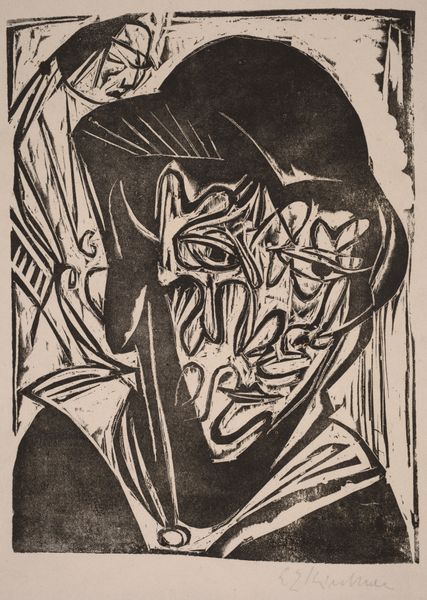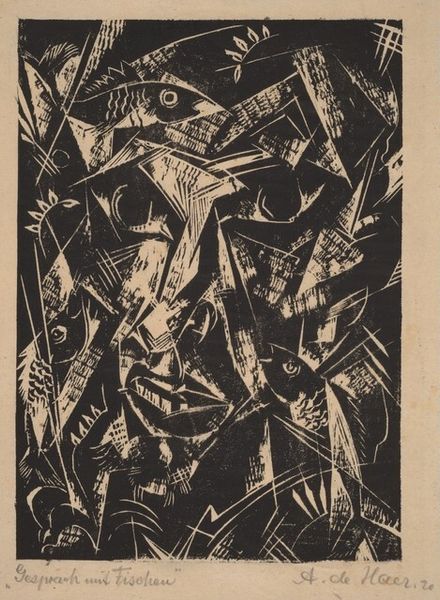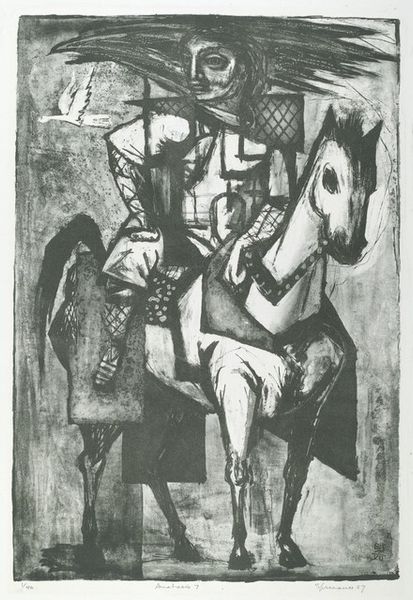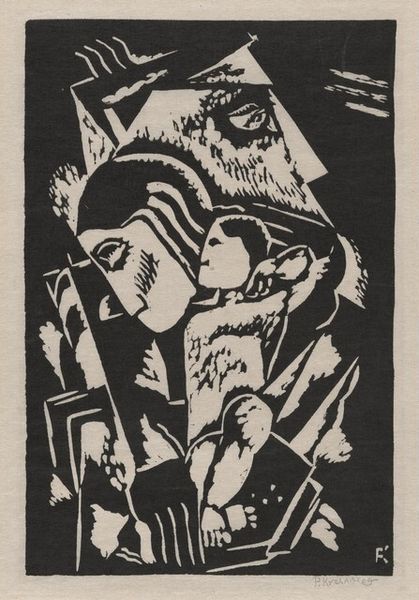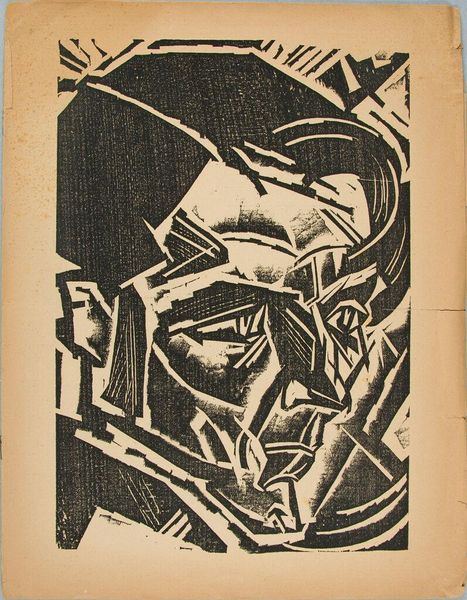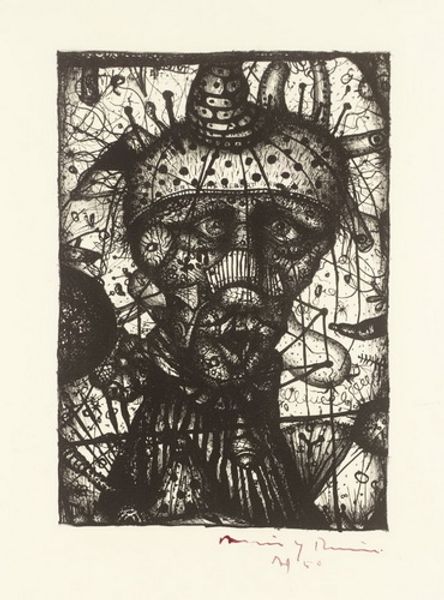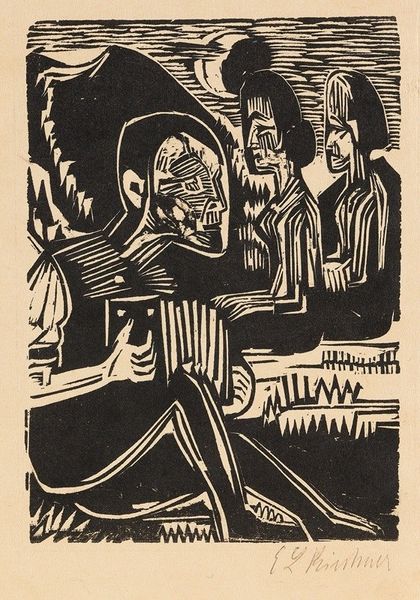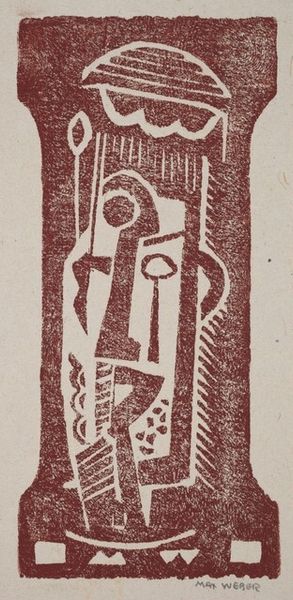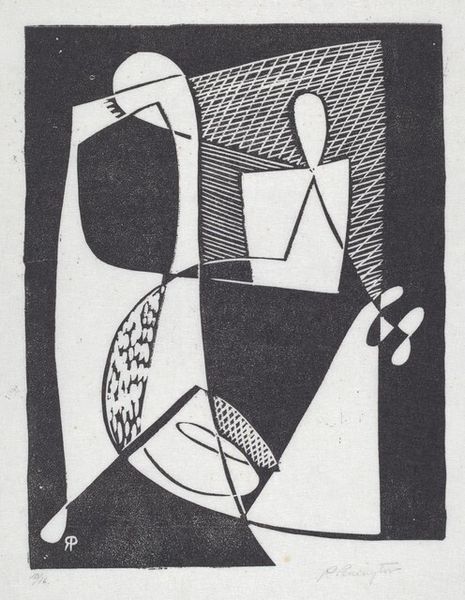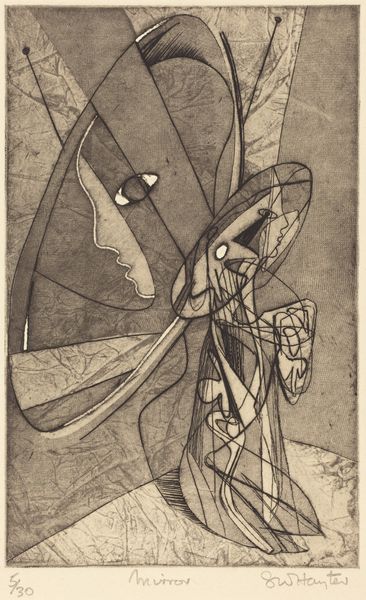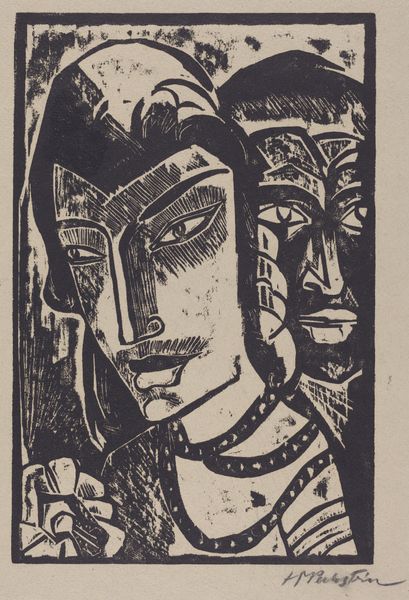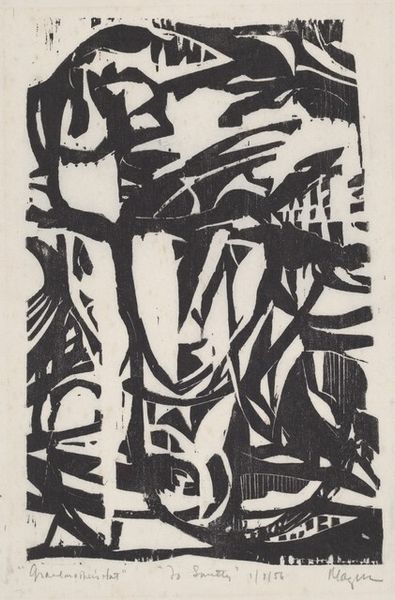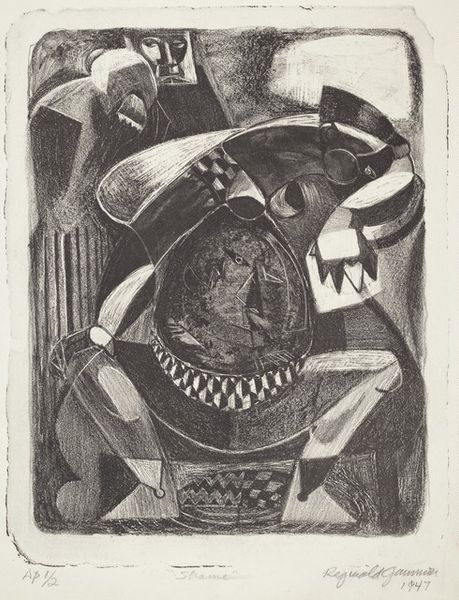
Dimensions: image: 902 x 635 mm
Copyright: © Succession Picasso/DACS 2014 | CC-BY-NC-ND 4.0 DEED, Photo: Tate
Editor: This is Picasso’s "Woman at the Window," held at the Tate. The stark black and white tones give it such a graphic feel. How do you interpret this work through the lens of symbolism? Curator: The window, a recurring motif, suggests both confinement and possibility. Notice how the woman's hands are raised, almost as if she’s reaching, or perhaps held back. Does this evoke any particular emotional state for you? Editor: Definitely, a sense of longing, maybe even a little frustration. Curator: Precisely. Picasso often used the female form to explore complex emotions and societal roles. The fractured planes could signify a fragmented identity, reflecting the changing social landscape of the time. Editor: I hadn’t considered the social implications of the fragmentation before! Curator: Visual symbols are never neutral; they carry the weight of history and personal experience. It’s how we decode these symbols that brings the art to life. Editor: This makes me see the work in a whole new light!
Comments
tate 7 months ago
⋮
http://www.tate.org.uk/art/artworks/picasso-woman-at-the-window-p11362
Join the conversation
Join millions of artists and users on Artera today and experience the ultimate creative platform.
tate 7 months ago
⋮
Made in Paris on 17 May 1952, Woman at the Window is a portrait of Picasso’s lover Françoise Gilot in profile. It is the second of two versions of the print. From the first to the second, the image was somewhat refined and the grey and black tones were made deeper and richer. Françoise's forehead was made a little less pronounced while her hair was rendered more geometric and defined. Finally, the shadow behind her changed shape, becoming darker and more solid. Gallery label, August 2004
